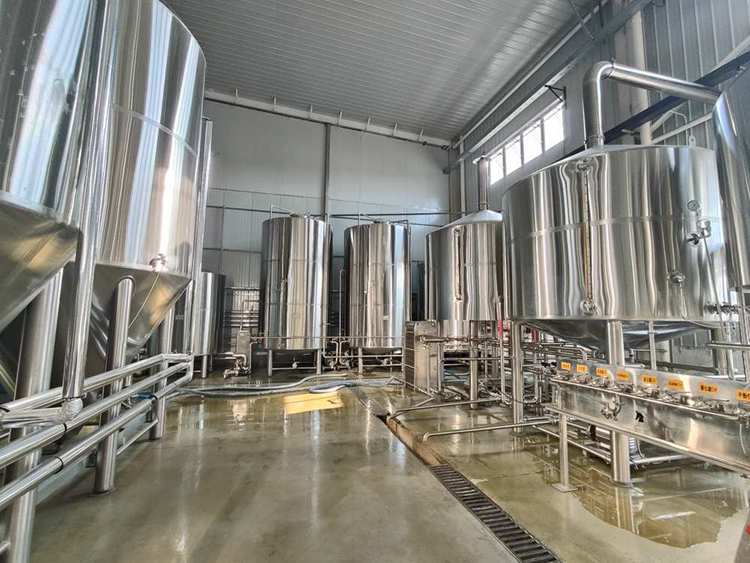
Brewery boiling adopts three heating methods: direct fire heating, electric heating and steam heating. Also for the size of the pot, we also consider the cost of generating heat when choosing. Steam heating is not the best option. The laws and regulations of some countries have caused great obstacles to the use of steam boilers, making some foreign customers have to choose electric heating. Some breweries have to choose cheap electric heating due to limited funds, but from the perspective of beer technology, steam heating is nothing more than the best choice for all breweries. And for the maintenance cost and multi-batch requirements of medium and large breweries, electric heating is much higher than steam heating in terms of brewing time and labor costs.
Steam heating methods can be divided into two types: steam jacket and heater. Jacket heating is commonly used in boiling tanks in small craft breweries. The steam passes through the jacket formed between the inner tank and the outer wall of the boiling tank. The principle of steam condensation and heat release is transferred to the wort in the tank through the inner wall of the tank. Heat to boiling point and expected rate of evaporation. But for medium and large breweries of 3000L and above, as the volume increases, the heating area per liter of wort becomes smaller and smaller. Therefore, the common heating method for wort boiling in large breweries is heater heating.
The built-in heater is a cylindrical unit mounted in the center of the boiling pot and secured to the bottom of the pot by feet. Some stainless steel tubing runs through the built-in heater. The gaps between the tubes form cavities, steam enters from above, the wort is pumped into the boiling tank, and enters the heater from the bottom up, filling the tubes and exchanging heat with the steam.
The wort in the column tube is heated and boiled and sprayed upwards. In order to make the foam formed during the boiling process fall down and avoid the phenomenon of overflowing the pot, a diversion cover is provided above the heater. The shape of the shroud is that of an umbrella. When the wort boils, the spray touches the guide hood, then disperses and falls, completing the self-convection circulation of the wort from the inside to the outside.
Less heat loss. The wort heated by the built-in heater and boiled by self-convection circulation loses very little heat to the atmosphere and therefore heats up fastest.
Increase the heating area of wort and accelerate the evaporation efficiency. The continuous promotion of the circulation pump is equivalent to increasing the heating area, allowing more water molecules to escape in the form of steam.
While steam heating has the highest upfront investment and installation costs of any heating method, steam is popular in breweries for several reasons. A big reason is that investing in a steam boiler early on makes it possible to use steam heating when the brewery has significant heating needs, such as to provide heat for a CIP station.
Still have a problem on choosing the brewery equipment? We can help with your final decision. If you are looking for a turnkey solution for craft beer brewing system, please contact us. We are looking forward to working with you. Send an email now: [email protected]


.jpg)





Get A Quote